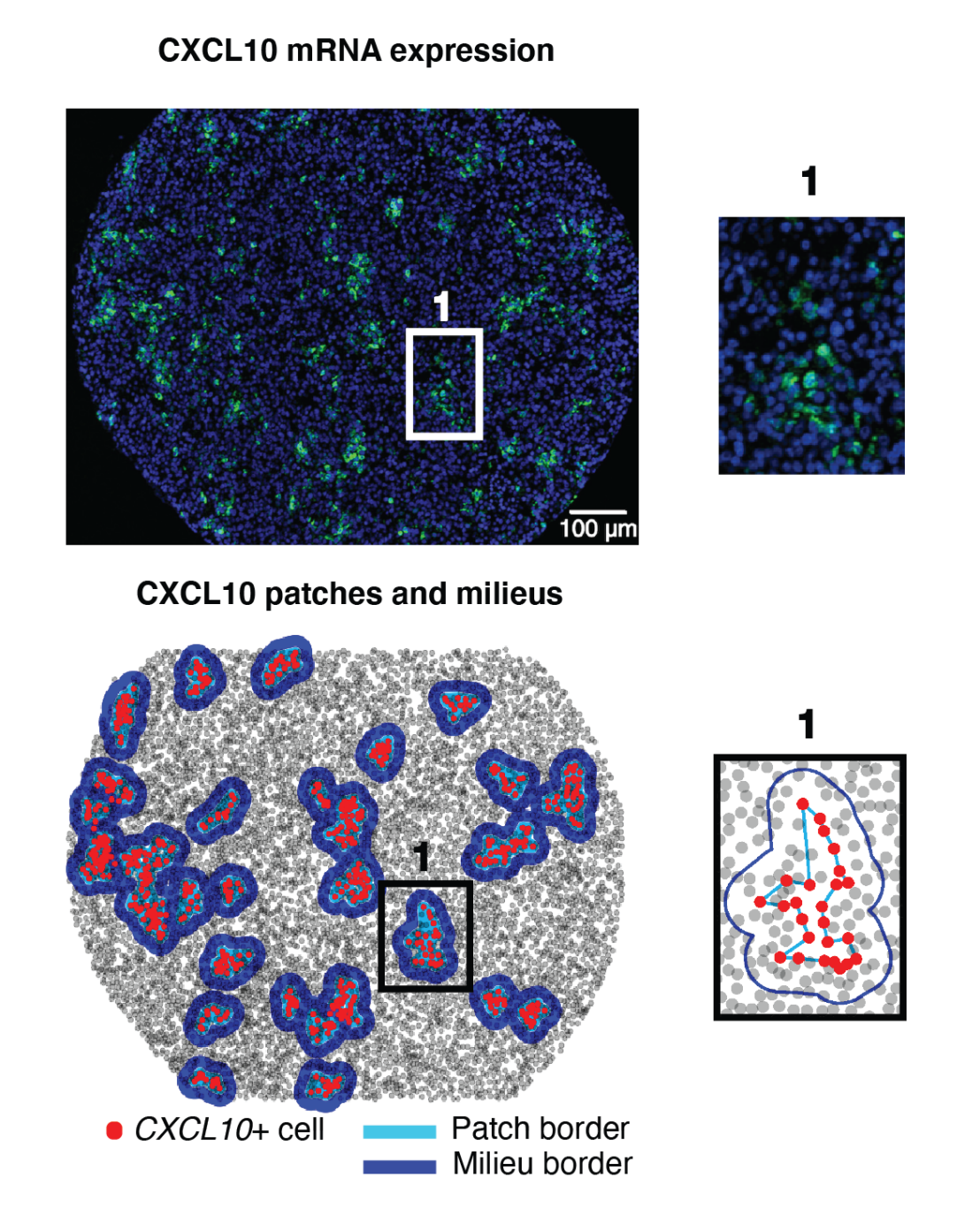Imaging of chemokine milieus in melanoma helps to understand immune cell recruitment
A recent "Science Immunology" paper by the Bodenmiller group in collaboration with the Dermatology Department of the University Hospital Zurich analyzes the immune cell landscape in metastatic melanoma patients with a focus on secreted proteins that are involved in immune cell recruitment.

Immune cells are crucial for tumor control and antitumor responses during immunotherapy. Their recruitment into tumors is mediated by binding of specific immune cell receptors to chemokines, a class of secreted proteins that induce directional movement of immune cells.
To broadly characterize chemokine expression and function in melanoma, the authors used an advanced imaging method to analyze the presence of chemokines and immune cells in metastatic melanoma samples by co-detecting the expression of proteins and RNA transcripts.
Tumors that lacked immune cells were devoid of most of the profiled chemokines and exhibited low levels of antigen presentation and markers of ongoing inflammation – an indication that the tumor was undetectable for the immune system. Tumors with many immune cells, which is generally associated with a better outcome for the patient, were characterized by expression of multiple chemokines.
The authors observed that certain chemokines are often expressed in patches and are located near T cells that show signs of exhaustion and dysfunction. These dysfunctional T cells often produced a chemokine that recruits B cells, another important class of immune cells involved in the response against a tumor.
Further analyses supported the observation that these dysfunctional T cells might play a role in B cell recruitment and the formation of larger B cell structures. The authors propose a theory where T cells become exhausted and dysfunctional due to a long-term exposure to tumor cells. In a “cry for help”, these cells potentially recruit other immune cells to maintain and enhance the response against the tumor.
More in-depth knowledge of such mechanisms is important to understand where drugs or other interventions could potentially support the immune system of a patient.
Link to the paper in external page "Science Immunology"